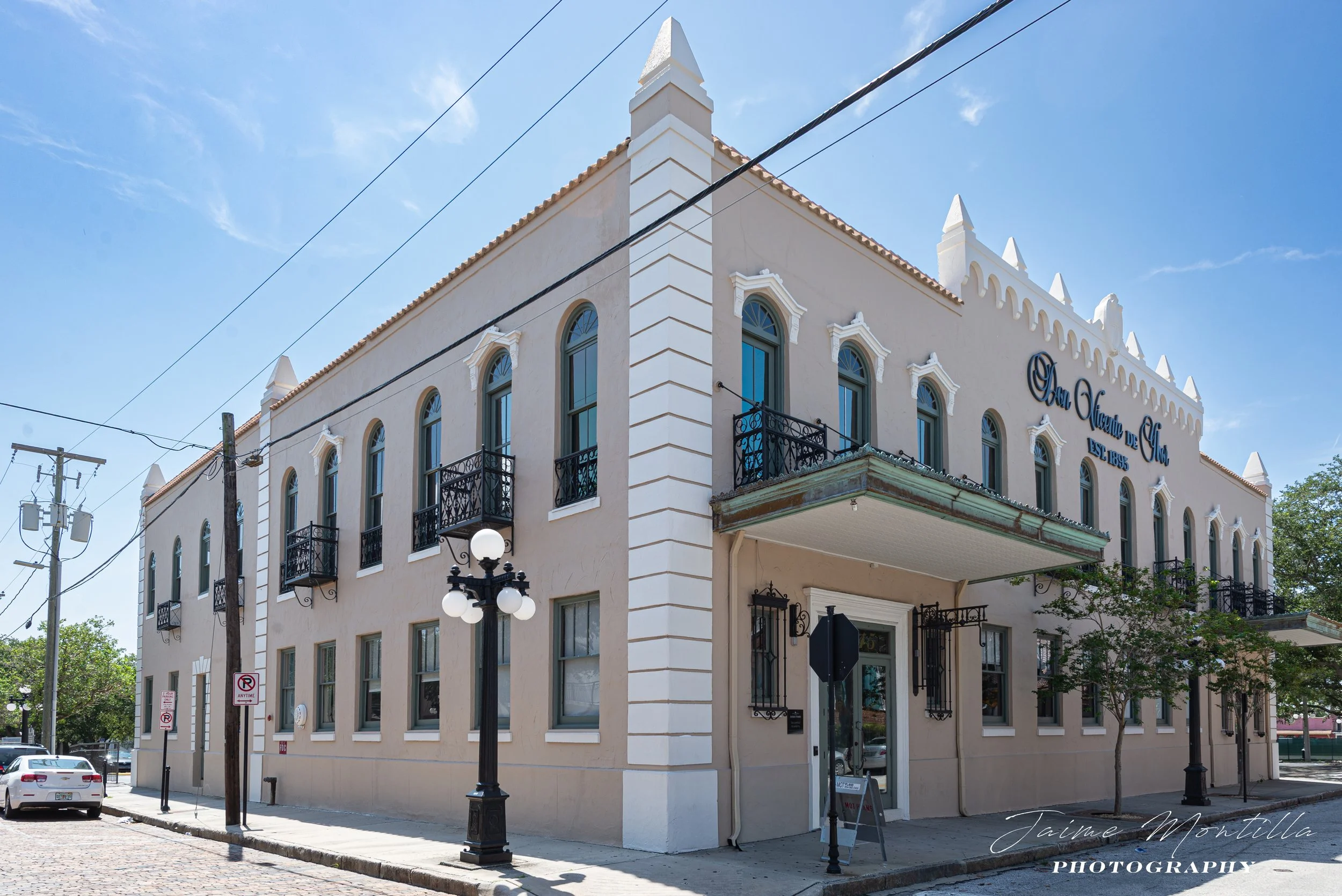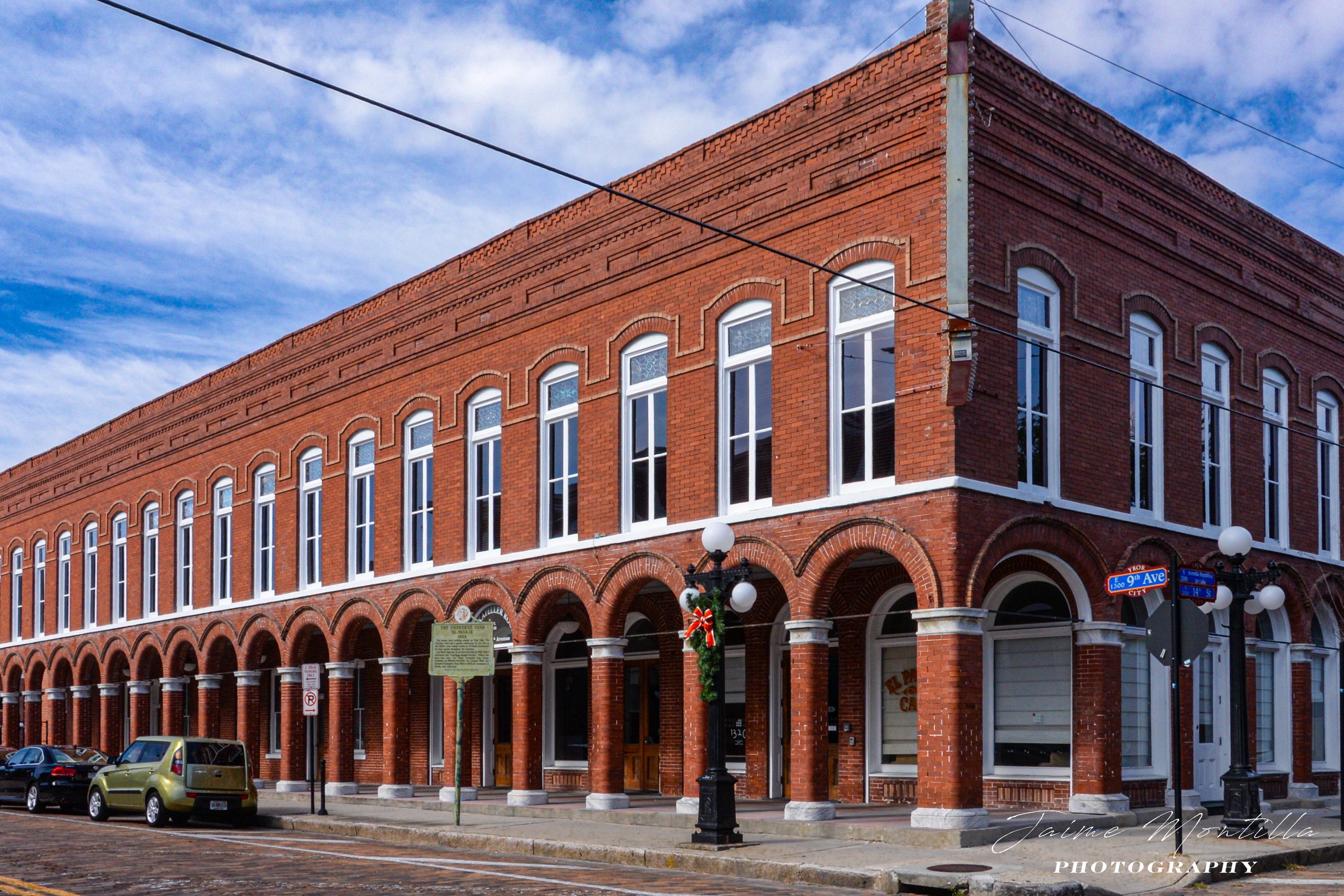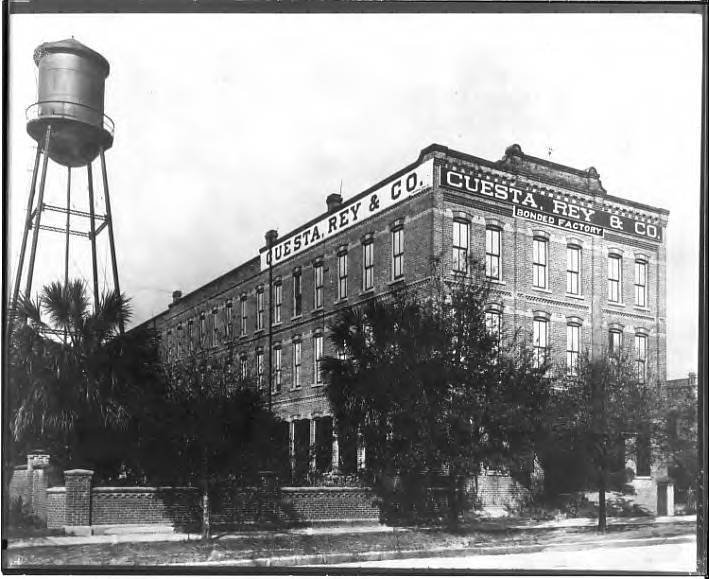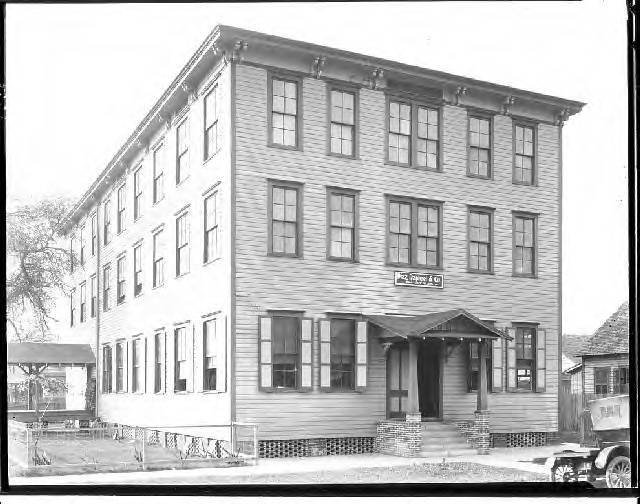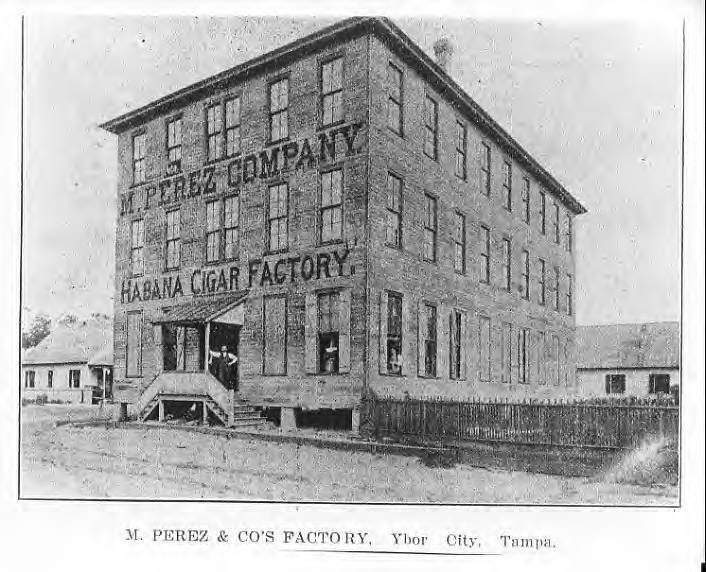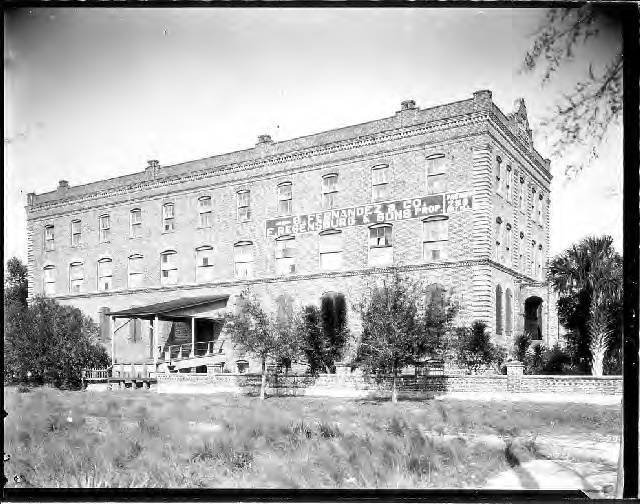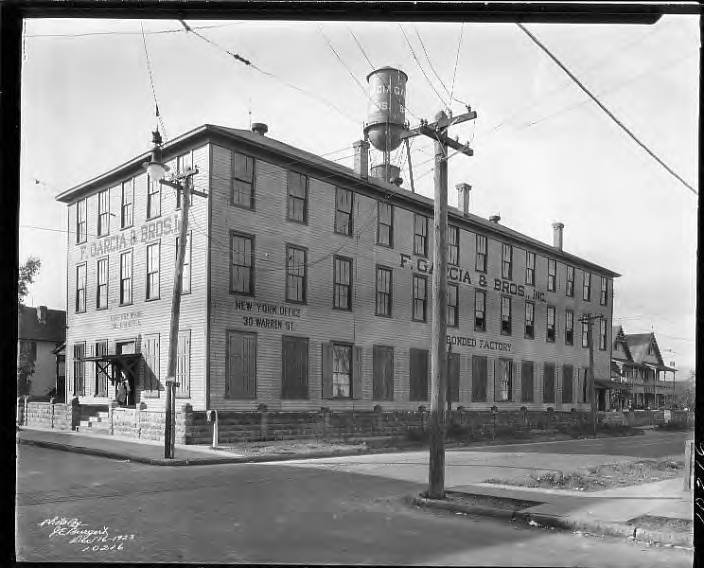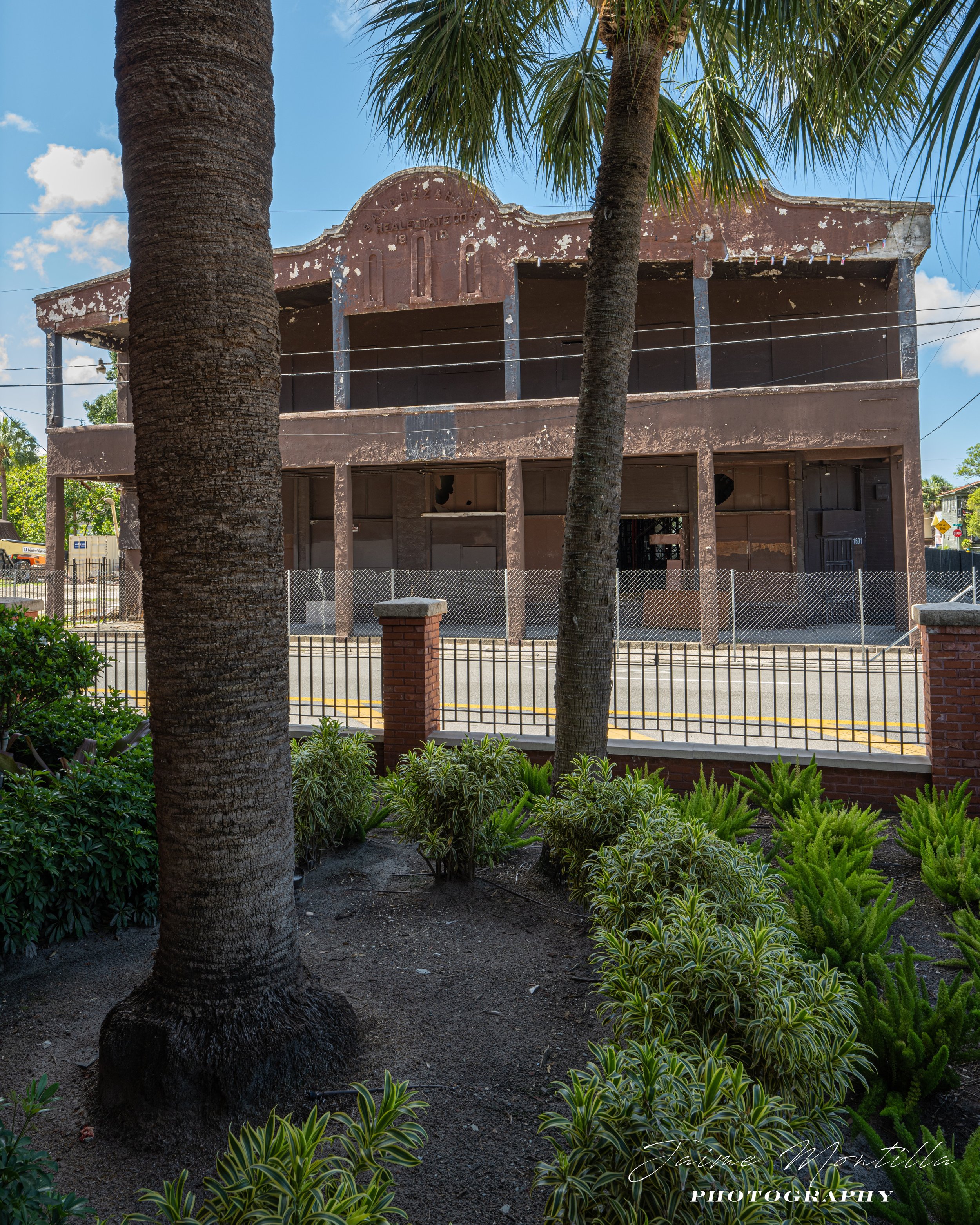
Tampa Cigar Industry
In the early 1830s, French immigrant from Lyon Odet Philippe (1787-1869) is reported to have operated a small cigar factory in Key West where the industry had been established for little less than a decade. J. Allison DeFoor II, a descendant of Philippe, states in this July 15, 2014 edition of the South Tampa Magazine that the Second Seminole War brought Philippe to the Tampa Bay Area. DeFoor also states that Philippe's noble status and other rumors surrounding his life are mostly unfounded. Regarding Philippe's cigar making, DeFoor says he found records that credit Philippe with bringing cigar making to Tampa…."he was able to make a considerable profit producing and selling cigars in Charleston and Key West, so he continued that trade in Tampa."
A different version of the beginning of the cigar industry in Tampa is given by Armando Mendez in his book Ciudad de Cigars: West Tampa. Mendez states that the Tampa cigar history dates back to;
“...1838, when Count Odet Philippe settled in the Tampa Bay area and brought with him a female slave who had learned the art in Cuba. Although the unnamed slave’s principal job was to produce cigars for his personal use, Philippe, who operated an oyster shop near Fort Brooke, sold the soldiers of the fort the excess cigars.”
However, Tampa did not become an attractive location for cigar manufacturing until some fifty years after Philippe's arrival in Tampa. By that time, the industry was already well established in Key West, New York and other cities of the northeast and the midwest. In 1886 Manhattan was home to one thousand nine hundred sixty cigar factories of which 3.9% employed one hundred plus rollers and California was home to three hundred eighty five cigar factories of which 3.8% employed one hundred plus rollers. In contrast, Florida had the the highest percentage of large factories with 30.5% of the factories employing one hundred plus rollers rollers, though home to only one hundred fifty four cigar factories. Illinois ranked third in number of cigar factories with one thousand one hundred ninety seven but only three (⅕ of 1%) employed one hundred plus rollers.
Vicente Martinez Ybor (1818-1896) and Ignacio Haya (1842-1906) are considered the fathers of Tampa's cigar industry and the major players in the development of Ybor City. As story goes, Tampa's cigar industry began in earnest as the result of guava, not tobacco. While a partner in charge of Martinez Ybor factory in Key West, Eduardo Manrara would often travel by water to Tampa where he then continued his trip by land to New York where Martinez Ybor lived at the time. Allegedly it was from these frequent visits to Tampa that the belief arose that guava tress were abundant in the area. When Bernardino Gargol, a Cuban immigrant resident of New York who imported jellies and preserves made from the guava fruit heard the rumors, he envisioned producing his products in the US and decided to visit Tampa. In 1884 he convinced his friend and associate, Spanish immigrant Gavino Gutierrez, a New York architect, civil engineer, surveyor and importer to make the trip to Tampa with him in search for the guava trees. During their visit they found no guava trees, but were impressed with the area's weather, vast undeveloped land and economic potential as a port town. On their return voyage to New York, they stopped in Key West where they met with Martinez Ybor and his friend from New York Ignacio Haya who happened to be visiting with him. Timing was perfect as both Martinez Ybor and Haya were considering relocating their factories from Key West and New York respectively, and at least Martinez Ybor had looked into relocating to Pensacola, Mobile or Galveston due to labor issues and continued worker strikes in Key West.
Martinez Ybor and Haya were already veterans of the cigar industry when they met with Gutierrez and Gargol in 1884. Born in Valencia, Spain, Martinez Ybor emigrated to Cuba at the young age of fourteen in 1832. In 1856 he opened El Principe de Gales cigar factory in Cuba which was an immediate success. The Ten Years War, Cuba's first war for independence, began in 1868 and in 1869 Martinez Ybor left Cuba for Key West where he soon opened a new El Principe de Gales factory. Haya, born in Escalante, Cantabria, Spain, emigrated to New York at the age of eighteen in 1860. In 1867, when he was twenty five, he started there the Sanchez & Haya Cigar Co. in partnership with also Spanish immigrant Serafin Sanchez (1839-1894).
As a result of their meeting with Gavino Gutierrez, in October 1885 Martinez Ybor accepted an offer from the recently established Tampa Board of Trade and bought forty acres of land northeast of Tampa for $9,000 and Haya followed by purchasing additional land adjacent to Martinez Ybor. After a costly strike in 1885, on April 1, 1886 a fire destroyed Martinez Ybor's factory in Key West and rather than rebuilding, he decided to relocate to Tampa. At the same time Haya decided to relocate his factory from New York. Both Martinez Ybor and Haya not only established the first cigar factories in what would become Ybor City, but they also planned a Real Estate business and a company town modeled after the successful example of Pullman, IL which induced other manufacturers to move. Pictured below are the buildings that housed the Ybor City Land & Improvement Co. built in 1891 and the Sanchez & Haya Real Estate Co. building constructed in 1910. Years later, from 1939 until 1983 the Ybor City Land & Improvement Co. building housed and was known as the Gonzalez Clinic. As of June 2023 renovations of the Sanchez & Haya Real Estate Co. building, now owned by J. C. Newman Cigar Co., are under way for it to be a hotel, cigar bar and café at the heart of a revitalization project creating the El Reloj District in Ybor City.
On Tuesday April 13, 1886, Haya's factory produced the first cigar in Ybor City. This began a new industrial town made predominantly of immigrants and was the foundation for the development of modern day Tampa. In chronological order, the first factories to start operation in Tampa were (1) Sanchez & Haya, (2) V. Martinez Ybor, (3) Lozano-Pendaz and (4) R. Monne. In the twenty years or so that followed, many cigar companies relocated to Tampa and tens of thousand of Cuban, Italian and Spanish factory owners and workers followed. A list of the cigar companies that either established or relocated their factories to Tampa between 1886 and 1915 was compiled from the Sanborn Fire Insurance Co. maps published in April 1889, March 1892, June 1895, June 1899, 1903 and 1915. The list, which can be accessed by clicking on this link, may not include all the cigar factories that operated between 1886 and 1915, it only includes the cigar factories included in the Sanborn maps.
Tampa’s cigar industry thrived into the 1920s but just like it happened in Key West and contrary to what Martinez Ybor envisioned, the Tampa cigar industry was not free of labor unrest. During its early life the 1899 strike known as the ‘Weight Strike” was the first of several strikes and beginning of the transition between the informal system where owners imparted their personality and management style to their business and a new corporate organization ran at boardrooms. Four other major strikes in 1901, 1910, 1920 and 1931 affected the industry and resulted in some firms consolidating their operations and others closing down. The 2005 Thesis by Brian Koepnick and a University of Florida Bureau of Economic and Business Research study of September 1939 titled The Cigar Industry of Tampa, Florida are both good readings about the industry's beginning, labor issues and overall development.
After the success of Ybor City, West Tampa became the "second" cigar city in Tampa. West Tampa was the idea of Scottish immigrant and attorney Hugh C. Macfarlane (1851-1935), whose family emigrated to Massachussets in 1865. He moved to Tampa in 1884 and in 1886 acquired some two hundred acres of land on the west side of the Hillsborough River. He proceeded to survey and platt industrial sites and residential lots, streets, and public areas and six years later started marketing the land as a cigar factory town. In his book, Mendez states that the first cigar factory in West Tampa was established by the Del Pino brothers in June 1892. This factory was built on a square city block that interrupted through traffic on Howard Ave. between Main St. & Oak. St., originally intended as the town's plaza or main square. However, by early 1893 the Del Pino brothers factory had shut down because of their inability to recruit workers due to lack of access, transportation and housing for workers and their families.
The second cigar factory to be established in West Tampa and the first successful one was the O'Halloran Cigar Co., opened in 1893 at the building left vacant by the Del Pino brothers. O'Halloran Cigar Co. success was attributed in great part to the completion of the Fortune Street Bridge in early 1893. The wooden bridge built by Macfarlane connected Fortune St. on the east side of the Hillsborough River with Arch St. on the west. Pictured in the gallery below is the bridge ca. 1910. This was an improved bridge from the original one with wooden plank and steel rail tracks road surface. It was further improved between 1912 and 1913 and was replaced in 1927 with the Laurel St. Bridge, photographed below as it looked in July 2023. The bridge was built with private funds by Macfarlane and others including George N. Benjamin (1856-1926) and his father-in-law Dr. Phillip H. Collins, John H. Drew ( -1938) and banker Alonzo C. Clewis (1864-1944). Easy access to workers from Ybor City allowed West Tampa to quickly grow its number of cigar factories, which were twenty five by 1894 compared to eighteen in Ybor City.
The above information regarding the Del Pino brothers cigar factory being the first one in West Tampa is generally accepted by West Tampa historians, however, is not consistent with the 1983 registration document of the West Tampa Historic District in the National Register of Historic Places. The registration document states that the first company to establish a cigar factory in the district was the Julius Ellinger Cigar Co. who relocated from Key West in the early months of 1893. The document indicates that the O'Halloran Cigar Co. was the second company to establish a factory in the district when it relocated also from Key West in 1894.
The Tampa Tribune on October 4, 1901 published an article notifying that the O'Halloran & Co. cigar factory building and adjacent buildings were destroyed the night before by a blaze which was thought to be of incendiary origin. The Tampapix website has valuable information regarding the early years and development of West Tampa including the events surrounding the fire that destroyed the O'Halloran & Co. factory in 1901 and the West Tampa great fire of April 1904.
Ybor City and West Tampa were annexed to the City of Tampa in 1887 and 1925 respectively. Previous to annexation, West Tampa had been an incorporated city since 1895 with its own municipal government but Ybor City was not. The growth of both areas was fueled by the newly established cigar factories and the development of the cigar industry in the area. Both were instrumental in the development of the City of Tampa and gave it the character and personality it still enjoys to this day. As an example, before the first cigar factory was established in 1886, Tampa's population was estimated at seven hundred and fifty people, by 1889 population had increased to over ten thousandd mostly immigrant cigar workers and their families.
According to the book Tampa and the New Urban South: The Weight Strike of 1899 by Gary R. Mormino, in 1866 customs receipts at the port of Tampa totalled $2,508, by 1900 duties mainly tobacco related approached $1 million a year. Mormino states that
"...by the turn of the century, 111 million cigars were being produced annually in Tampa's factories, a staggering amount since the cigars were individually hand-rolled...in 1900 Tampa received 1,180 tons of Cuban tobacco valued at nearly $3 million which was transformed into $10 million worth of cigar exports."
In 1900, cigar workers earned $2 million in wages and Tampa emerged as the leading industrial city in Florida. In an 1896 article, the Tampa Tribune compared what the cigar industry was to Tampa to what the iron industry was to Pittsburgh or the cotton mill industry to Manchester, England. The invention of the cigar roller machinery, frequent worker strikes and the increased popularity of the cigarette after WWI, led to the industry's slow decline. The Great Depression and World War II expedited the cigar industry’s downfall, and today only one company, the J. C. Newman Cigar Co., still produces cigars in Tampa.
The typical cigar factory buildings were ornate, three story, initially wooden and later brick structures. The rectangular buildings were built lengthwise from east to west at the corner of a city block with many windows along the north and south sides to capture the prevailing breezes and allow in fresh air and natural light. The setups were generally the same for all; a basement to store tobacco, a first floor for offices and where tobacco leaves were brought in and finished cigars sent out, a second floor where cigars were rolled, and a top floor where tobacco leaves were prepared and graded.
Today there are still a number of cigar factory buildings and other structures from the early days of Ybor City and West Tampa remaining, most of which were built towards the the end of the 19th and beginning of the 20th centuries. In all, identified herein and photographed are twenty seven remaining cigar factory buildings and the rubble of the V. Guerra, Diaz & Co. building which burned to the ground in July 2015 just before this project was started. The factory buildings photographed can be located in the Cigar Factory Buildings Map in the Maps tab above.
Below are pictures of some demolished cigar factory buildings reproduced from the Burgert Bros. photography collection and made available courtesy of the Tampa-Hillsborough County Public Library System. Some of the Burgert Bros. vintage photos have been restored in color and their image quality enhanced to the extent possible. Current photographs below and in each factory building page were taken at different times between 2014 and 2025.
As with the other pages on this site, the purpose is not to tell the history of the cigar industry in Tampa which is already well documented, but to actualize in pictures the current status of the cigar factory buildings still standing. A brief description of each structure is made for a better understanding of what they represent.
